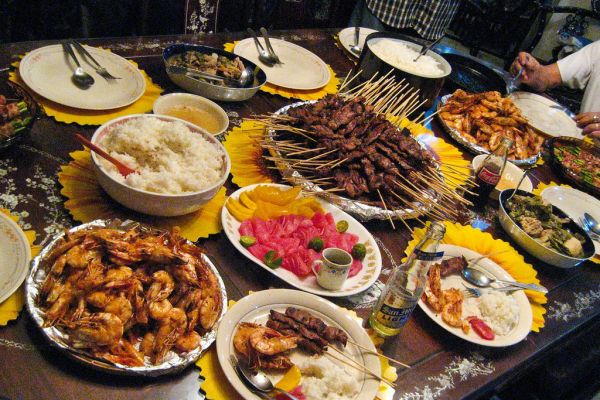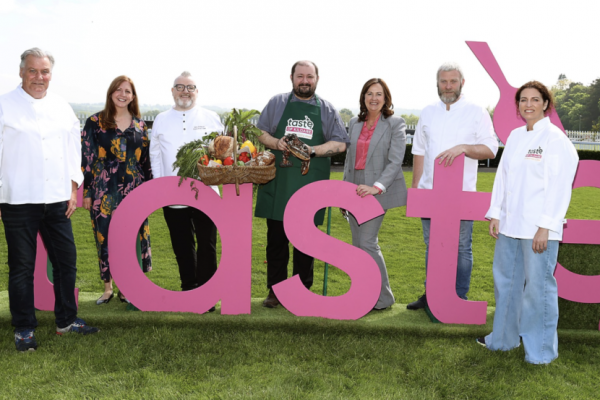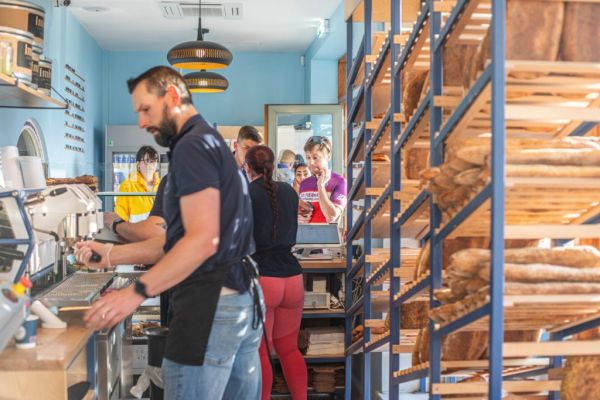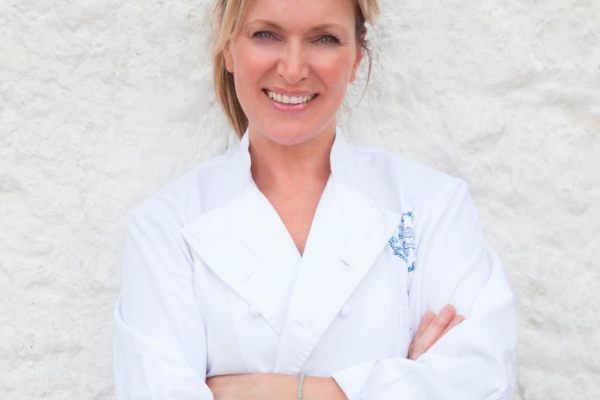Have you heard that Filipino food is a big trend this year?
Undoubtedly you have. I've said it. Likewise, it made trend lists last year. And the year before. If you compared specific Asian cuisines to stocks, Korean food might be Google, a solid, upward ticking buy. Filipino food would be more like an oil stock—a bumpy ride.
Yet, 2017 seems poised to be the year you can bet on Filipino food. Google searches for “filipino food” have doubled since 2012, while queries for “lumpia near me” (referring to the crunchy Filipino-style spring rolls) have skyrocketed 3,350 percent. The time for Filipino food to take center stage is finally here, all my food trend instincts tell me. I have a list of compelling reasons.
For one, a marquee restaurant has broken big.
Bad Saint, the 24-seat Washington spot that specialises in thrilling dishes such as braised goat with charred coconut and chiles was the major restaurant story of 2016, landing No. 2 on Bon Appétit’s annual America's Best New Restaurant list. It's become a high-profile showcase for Filipino cooking, giving it a sexiness that merits lining up for hours.
Meanwhile, chef Alvin Cailan, founder of California (now Vegas, too) egg sandwich phenomenon Eggslut, is taking on the mantle of Filipino food champion, launching a passionate campaign after experimenting with his Amboy concept last year. He's designed an "I ❤️ Filipino Food" logo for his 2017 endeavors as he searches for a permanent location. "My goal is to get enough exposure for Filipino food so that it's the answer to the question, 'What should we have for dinner tonight?'" said Cailan. "I saw an article that said Filipino restaurateurs are afraid to enter higher-rent markets because they don't have confidence in the cuisine. I'd like to show that Filipino food can be accessible to any demographic."
Cailan has some help on the East Coast from fellow Filipino-American chef Dale Talde. His recently opened Talde Miami serves such standout dishes as roasted branzino with tomato turmeric jam and chiles. Come spring, he’ll introduce Rice & Gold in New York's 50 Bowery Hotel. The menu will have a serious Filipino component, including the rice and chicken soup, arroz caldo. “You braise chicken like any Jewish grandmother, add rice to thicken it up, hit it with a lot of garlic and a ton of ginger and scallions. I add fish sauce and turmeric,” Talde said. “It’s the congee of the Philippines.”
A crave-able dish like that, labeled as a Filipino specialty by such a notable cook, is another thing that will help raise the cuisine's profile.
Compare this to Korean food, which has identifiable hallmarks such as kimchee, which has become a national obsession, and roast pork bo ssam, which is popular whether or not you’ve been out drinking all night. Meanwhile Filipino food is best known for balut, a fertilized duck egg that sounds freaky to most Americans. Tastier-sounding dishes such as pork adobo (stewed with soy, garlic, and bay leaf) and those deep-fried lumpia are not yet ubiquitous, even if they should be. The cuisine also utilizes lots of vinegar, lots of frying, and lots of funky flavors—all in sync with America's expanding palate. Which raises the question: Why haven't packed New York Filipino spots Jeepney and Pig & Khao spawned copycats the way the Korean-inspired Momofuku empire has?
For one thing, Filipino is the original fusion food, a mix of Malaysian, Chinese, and Spanish, with some Indian and American influences. It all makes Filipino food hard to pin down. If a cuisine is so far-ranging and reminds you of other foods, it's harder to get passionate enough to seek it out. And even among Filipinos, there are variations in the approach, with Chinese Filipino, Spanish Filipino, and so on. There isn't necessarily a definitive recipe for a classic, as for such a dish as Italy's cacio e pepe.
One theory is that most Filipinos come to the U.S. speaking English, so they blend faster into the American melting pot—as does their food. Talde said that many first-generation chefs, himself included, have been reluctant to shout about their Filipino roots because they're afraid it will alienate diners. Talde sees that changing.
“To some degree I credit David Chang [of Momofuku]. He made it cool for Asian cooks to do what we do, to represent our cuisine, and to be unapologetic about it,” said Talde. “I don’t care if people say it’s too funky. I’m ready to say: This is how it is, this is my food.”
In an excellent article on forecasting food trends, the New York Times’s Kim Severson noted that while you were making your frosé and red wine hot chocolate, you might consider that real food trends tend to move at a glacial pace. So it seems to be with Filipino food. Slowly and steadily, it's here. And if you, like me, want to bet on it in 2017, here are a few places to investigate.
Rice Bar, Los Angeles — Charles Olalia, who cooked with the famed Guy Savoy, serves dishes such as dilis, which are tiny, sun-dried, deep-fried anchovies with avocado and radish salad. (Talde says they take on "legit, potato chip status" when fried correctly.) Each dish has a suggested rice pairing; with dilis, it’s garlic fried rice.
Perla, Philadelphia — This compact restaurant reinterprets the most notable recipes from the Philippines. Chef Lou Boquila serves duck adobo with cauliflower and kambocha as a creative take on the porky soy sauce-braised classic.
Kuneho, Austin — Paul Qui’s new restaurant may be dominated by sushi and Japanese dishes, but he offers some dishes from his native Philippines, including sisig, an unconventional pork stir-fry spiked with citrus and chiles, and morcilla à la dinuguan, the most elegant take on blood sausage.
F.o.b., Brooklyn — The restaurant's name is shorthand for "fresh off the boat," reclaiming a usually derogatory spike at Asian immigrants. Armando Litiatco, who cooked at Daniel, highlights family recipes and Filipino barbecue, including liempo, or grilled pork belly, with spicy cane vinegar dip.
Jollibee, Chicago — A fast food chain that’s as prolific as McDonald's is in the Philippines recently arrived in Chicago, set inside the mammoth Filipino food market, Seafood City. There are some unconventional Filipino dishes, such as sweet spaghetti studded with hot dog slices, but the go-to order is fried chicken.
News by Bloomberg, edited by Hospitality Ireland









